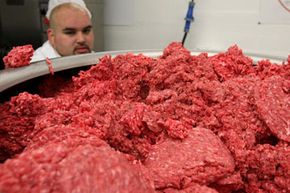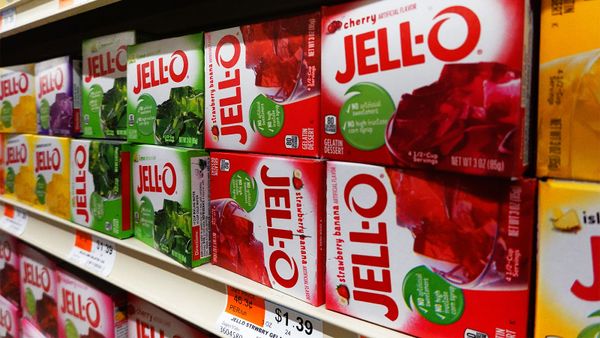It sounds like a fun gross-out toy for kids. But, in fact, many of us actually chew, taste and gulp down this horrible-sounding stuff regularly. Pink slime, aka Lean, Finely Textured Beef (LFTB), is used as filler in some frozen entrees, meatballs, canned foods, hot dogs and fast food, for example. But LFTB has become most notorious for its role in ground beef. Up to 15 percent of the "meat" in ground beef packages we buy at supermarkets is actually LFTB, and a former USDA employee said at one time that LFTB was in 70 percent of those packages, according to ABC News.
Before LFTB, fat trimmings left over after meat processing were scrapped, or used in dog food or oil. Trimmings were subject to carry E. coli and salmonella, since they're extracted from an area close to the hide of the animal; therefore, they were regarded as unfit for human consumption. In the 1990s, however, the owner of South Dakota-based Beef Products, Inc., devised a way to treat this scrap meat, separating the fat from the lean with heat and then penetrating it with gaseous ammonia -- that's right, ammonia -- to remove the bad bacteria. The resulting product, LFTB, was sold in frozen bars at an affordable price to food manufacturers.
Advertisement
When LFTB emerged, the USDA had no problem at all with it becoming an ingredient in other foods like ground beef and didn't require any special labeling, since it was, in essence, still beef, and ammonia was part of a process, rather than an ingredient.
But in 2009, when a New York Times article outed the ammonia treatment and dubbed LFTB "pink slime," the public had a different reaction to "lean, finely textured beef." The "pink slime" moniker actually originated from a 2002 internal e-mail Gerald Zirnstein, a USDA scientist (now whistleblower) wrote to his colleagues, in which he stated that he thought it was fraudulent to call LFTB "beef." Among other things, the Times article revealed that in 2003, Georgia officials returned a shipment of Beef Products' frozen LFTB when cooks at a prison complained that it reeked of ammonia -- so much so that they thought it had been contaminated accidentally. And in 2008, after Beef Products had adjusted ammonia levels in response to complaints about ammonia odors, batches tested positive for salmonella, the very thing the ammonia treatment was supposed to kill.
The article certainly brought up some questions about whether it's wise to add LFTB to ground beef and other food products at all, and the words "pink slime" turned people's stomachs. But is LFTB really as scary as it sounds?
Advertisement





